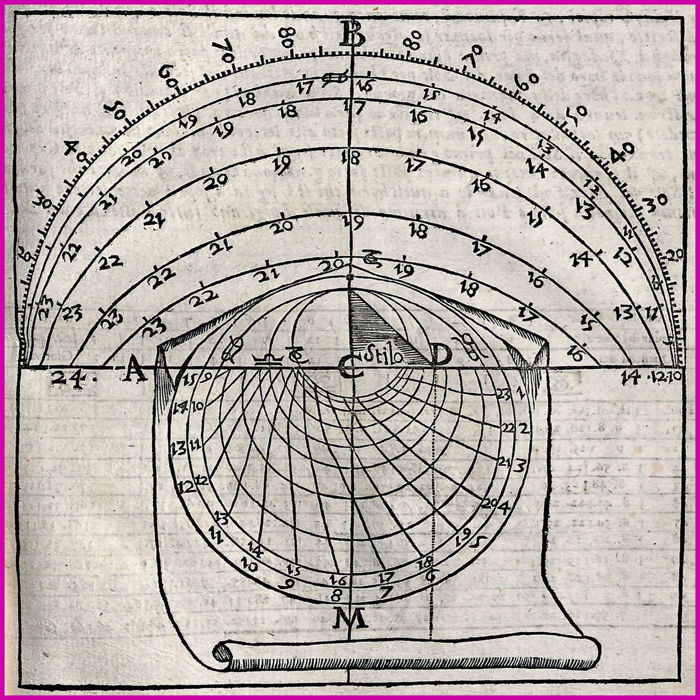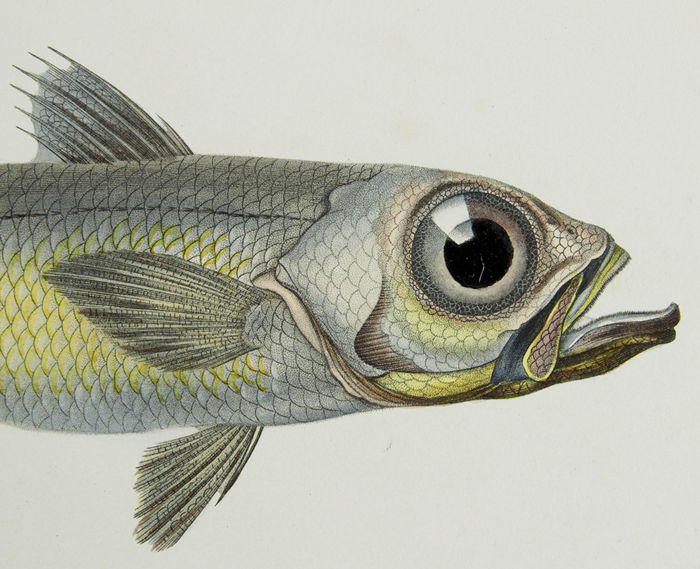If someone offered you a rare collection of Gnomonical works by The Vicar of the Convent of Saint Francesco at Turin, you would be forgiven for thinking it may contain illustrations of small bearded creatures holding fishing rods.
But in fact gnomology is the study of sundials, and specifically the angle of the shadows cast by the vertical rod. (You see – you can learn something from this blog).
What is particularly lovely with these works, apart from their scarcity, are the cut-out diagrams laid onto the illustrations to demonstrate angles.

As well as helping you to work out the angles of the sun (and so work out the time) one of the cut out additions helps you to look at the zodiac and work out the astronomical signs.

Here are the details of the two works:
CANTONE, GIROLAMO. Nuovo, e facil modo di fare horologi solari, orizontali, e verticali a tutte l’eleuationi di polo. Turin: per l’herede del Colonna a spese di Gio. Battista Vernoni, 1688.
[BOUND WITH:]
CANTONE, GIROLAMO. Modo di fare horologi portatili a sole, luna, e stelle sopra colonelle, croci, medaglie, e scatolini. Turin: Giuseppe Vernoni, per gli heredi di Carlo Gianelli, 1682.
4to (282 x 231 mm), modern leather over wood boards, red morocco labels with titles at spine, pp. 32 for first volume, pp. 40 (lacking title page and dedication to reader, provided in facsimile), for second volume. Text in Italian.
FIRST WORK: WOODCUT DIAGRAMS, THE TWO DIAGRAMS ON A14R AND A15V EACH WITH AN APPLIED GEOMETRICAL SECTION IN A CONTEMPORARY HAND.
SECOND WORK: WOODCUT DIAGRAM, SEVERAL FULL-PAGE, ONE WITH THREE VOLVELLES, SOLAR TABLES.

Rare manuals to study, design and realize sundials, and portable dials, to be used with sun, moon and stars.
These works were not only meant to be a theoretical treatise, but also act as practical manuals. In the introduction of the first work, Cantone lists all the tools needed to realise the objects he described in the manuals.
The first opera, the 1688 Nuovo e facil modo di far horologi solari, is a rare gnomonical work by the vicar of the convent of S. Francesco at Turin CANTONE. The title page states that it is the ‘seconda impresione’, second edition, the first being the Nuouo, e facil modo di fare col quadrante geometrico horologi solari, orizontali, e verticali a tutte l’elevationi di polo printed in 1670 which, though titled slightly differently, contains exactly the same number of pages.
Twelve years after the first edition, in the 1682 Cantone published the prosecution of the Horologi, solari, the Modo di fare horologi portatili, an earlier summation of the author’s knowledge on the specific subject of portable dials.
When he published the second edition of Horologi in 1688 the idea was to add to the opera the second edition of Modo di fare horologi portatili, but this second edition, for unknown reason, was never printed.
To have a complete set of Cantone’s works, an unknown owner decided to bound together in the present copy the second edition (1688) of Nuovo, e facil modo di fare horologi with the first edition (1682, the second never been printed) of Modo di fare horologi portatili
Both works are very scarce. Worldcat records only 6 copies of the first work and 9 copies of the second.
SBN/It records two variant collations of the 1682 publication, A and B. The present copy corresponds with A. No auction sale of either work is recorded in RBH or ABPC.
CONDITION: Title to first work lightly soiled and repaired at margins, both works repaired at lower corners, second work lacks p1 and A1 title provided in facsimile, several leaves with repaired holes.
PROVENANCE: applied geometrical section in a contemporary hand to two diagrams.
BIBLIOGRAPHY: Vol 1: Houzeau and Lancaster 11519 and 11533; Riccardi I, 228,1 not in BL. Vol II: Houzeau & Lancaster 11333 and 11542; Riccardi I, 228,2; Turner (ed.) Ritmi del cielo e misura del tiempo 93. KVK: no copy in Germany or Switzerland; COPAC: NL Scotland (1670 & 1688 ed.); Oxford (1670; 1682 ed.).
































































